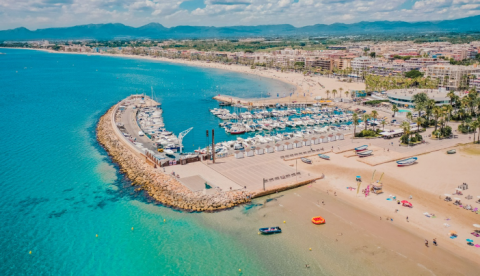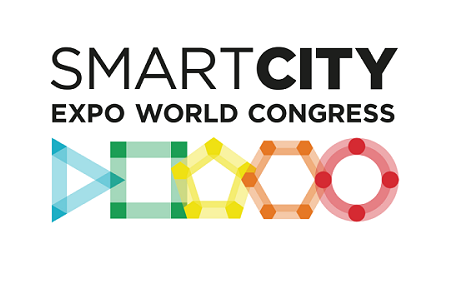Smart Water
For many years SICE has been promoting a range of activities in the form of projects and products. These form part of the vertical services integrated into the Smart City management platform, covering all environmental areas.
Products have thus been developed for measuring and controlling water quality and the parameters of different river basins; the company can offer intelligent irrigation systems and atmospheric and noise pollution measurement and control networks, etc.
A hydro-meteorological network consists of three fundamental elements: remote stations, a communications system and a processing system for controlling hydro-meteorological variables (flow and precipitation data, as well as other meteorological parameters such as air temperature, relative humidity, wind direction and speed, etc.).
Remote stations are responsible for the collection of data provided by sensors and processing, sorting and storing them before finally transmitting them. They are able to report instantaneously on serious alarms. If the alarm is not major, it is sent along with the rest of the information when it is updated from the central control post. SICE also offer data acquisition systems that are produced in house for different station types.
The communications system is used to transmit the information recorded by the stations to the processing center. SICE has experience with all types of communications, from satellite (DVB, INMARSAT, GOES, etc.) to UHF, VHF or Tetra radio systems, as well as the most simple GSM/GPRS systems.
The processing centre is the place where the system is operated and monitored and where all information from the remote stations is collected. Its main functions are communications management, displaying and storing data and managing alarms and emergencies.
SICE installs and maintains all components of hydro-meteorological networks.
Floods are the most common and frequent natural disaster worldwide, causing considerable loss of property and claiming numerous lives. Water authorities worldwide are aware of this problem and are increasingly making progress with the implementation of so-called early warning systems or eventuality decision support systems, in which SICE is expert.
As understood by SICE, early warning systems cannot be separated from the decision support systems, as there is always a connection between them and information systems (AHIS, AWQIS and hydro-meteorological networks, etc.).
In general terms, the early warning and decision support systems provided by SICE are based on modelling of the hydrological response of a basin or system at three basic levels - hydrological models, hydraulic models and dam management -, for the purpose of gaining time when identifying a risk and its possible effects, as well as to guarantee protection, minimize damage and warn the appropriate authorities and affected population.
More information about the Early Warning Decision Support System (DSS)
With the aim of equipping waste water treatment plants (WWTP) with instrumentation to continuously measure the quality of waste water, SICE installs, maintains and operates waste water quality control systems that are able to analyze various parameters in the effluent from each installation that is discharged into both streams and river basins. This ensures both the protection of the environment and compliance with requirements established in discharge authorizations issued by the relevant authorities.
As well as placing an emphasis on parameter measurement or monitoring elements, SICE's experience with water quality has shown it to be necessary to create and thoroughly optimize a series of auxiliary components, which are no less important. These, in conjunction with measurement components, will help to achieve an operational, reliable, robust and low maintenance system.
SICE provides exploitation, operation and maintenance services with its own highly qualified personnel for both active and disused supply networks.
Personnel management, ordinary and specialized maintenance, system operation, energy management and optimization of consumption, waste management and analytical control, etc. are some of the tasks performed by SICE.
More information about operation and maintenace of water supply systems
SICE works in the following two areas of activity in the sewerage and purification sector: exploitation, operation and maintenance, and infrastructure execution.
As with services provided to the supply sector, the first area of activity includes personnel management, ordinary and specialized maintenance, system operation, energy management and optimization of consumption, waste management and analytical control, etc.
The second area of activity consists of the execution of EPC contracts: solutions study, detailed engineering, installation of mechanical, electrical and control equipment, tests and commissioning of the installation.
More information about design and construction of Waste Water Tratment Plants (WWTP)
More information about operation and maintenance of Waste Water Tratment Plants (WWTP)
SICE provides a wide variety of technological services in this area, ranging from the laying of optical fibre for communications, telecommunications for the control and operation of hydraulic shut-off and regulation components and the installation of these components, to the implementation and update of data control and acquisition systems (SCADA), etc.
The company also takes on centralized control projects: information systems used to collect, transmit, submit and process information that describes the hydrological, hydraulic and quality status of water, for integral system management from a control centre. This can also include the integration of other subsystems, such as hydraulic modelling or decision-making assistance. This infrastructure has a global scope, as it involves actions at every water delivery point (installation of valves, meters, actuators and data transmission stations), in the area covered by the system (communications network) and in the control centre.
This system measures data on gas and particle concentrations and meteorological data to give real time air quality information.
Remote stations are able to measure gases (CO, NOX, SO2, O3, hydrocarbons and BTX, etc.), particles, meteorological parameters and noise levels.
SICE integrates monitoring networks with mathematical simulation models for analysis and short term prediction.
Meteorological networks can be installed for a wide range of purposes: by meteorological organizations themselves, to provide support to air quality measurement networks, meteorological control at airports, etc.
Not only does SICE provide solutions for all of these applications, but it also integrates weather stations in order to control variables that could affect road safety (gusts of wind, rain, ice on the road surface and visibility) as part of traffic supervision ITS systems on intercity roads.
SICE develops databases of environmental information and implements a range of different systems for publicizing environmental information on websites, smart phones, information panels, personalized talks, etc.
This business unit came about as a result of synergies with other services provided by SICE to its customers (maintenance of urban and hydraulic infrastructure), as it brings together tasks that are common to any service provision contract (personnel management, maintenance, etc.) with the need for knowledge and experience in other specific areas such as water treatment and energy optimization. SICE's strategic positioning in all of these fields mean that this service can be provided with full guarantees to customers.
The execution of "EPC" projects (engineering, procurement and construction) for the remote command, remote control and automation of all processes for the transport and treatment of drinking, irrigation and waste water forms part of SICE's catalogue of activities.
The company contributes knowledge and experience of its own personnel, built up over 25 years of experience on the market and applied to all areas, from the integral design of control architecture to the supply and assembly of all hardware, on-site sensors, analyzers, meters and PLC as well as programming the SCADA control system and the communications system.
More information about automation and control of linear hydraulic infrastructures
More information about automation and control of isolated hydraulic infrastructures
News
December 17, 2022
May 25, 2020

